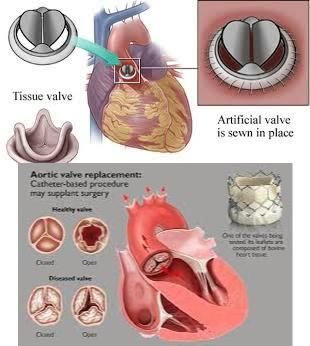Mitral and Aortic Valve Repair & Replacement
Valves are the doorways of the heart. When open, valves only permit blood to flow in one direction. When closed, they form a strong seal both between the different chambers of the heart and between the chambers and the blood vessels.
Your heart contains four major valves. Tricuspid, Pulmonic, Mitral, and Aortic. One or more of these valves may become damaged whereby it either leaks, causing blood to flow in the wrong direction, or becomes very narrow, making it difficult for blood to flow through it. In some cases, the valve may be repaired. In other cases, it must be replaced with a valve made of animal material (i.e., pig or cow) or metal.
Valve damage has many possible causes. Stenotic valves are often a natural result of aging. An infection can scar or rupture a valve. A scarred or thickened valve may not open fully. Stenosis increases the workload of the heart as it attempts to push the blood through a tight, restrictive valve. The heart chambers may enlarge as a result of the increased pressure needed to push the blood forward. A heart attack can create a leaking valve in which the valve does not close completely and blood is allowed to flow backwards.
Depending on the extent and location of the damage, valves can either be repaired or replaced. A replacement valve can be either a tissue valve or a mechanical valve. Depending upon the problem, the valve may be repaired rather than replaced. The choice of heart treatment is based upon the individual and the degree or type of problem.

